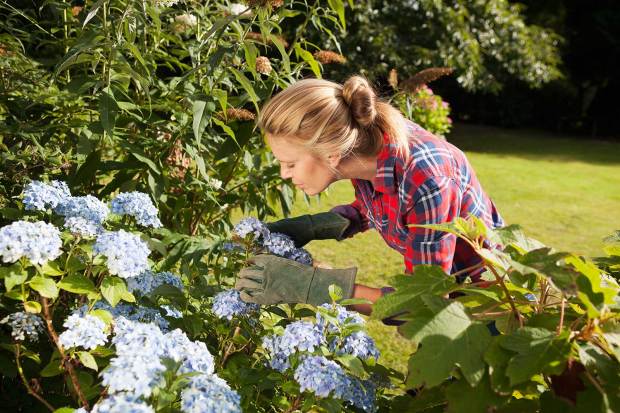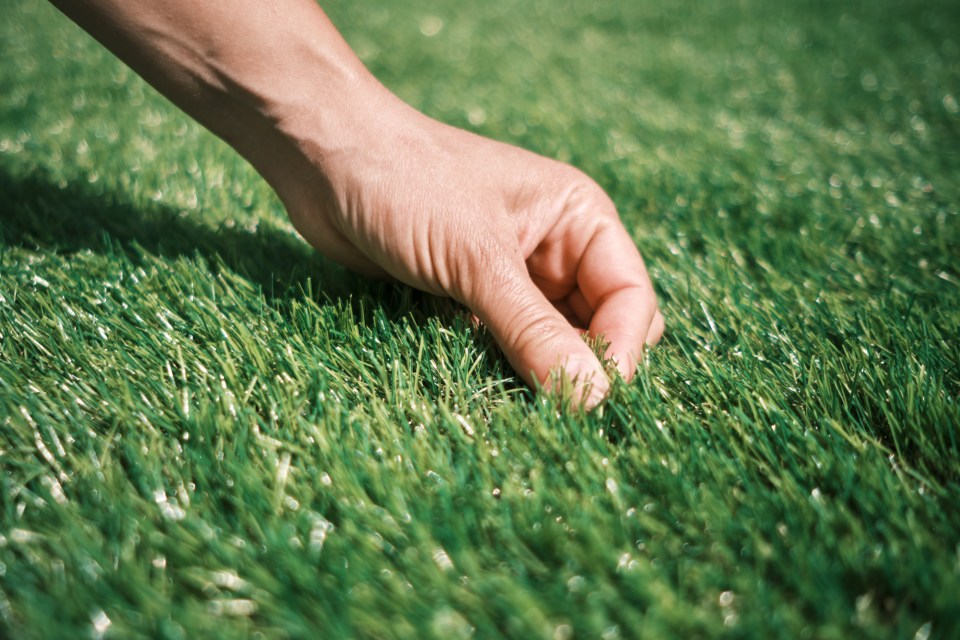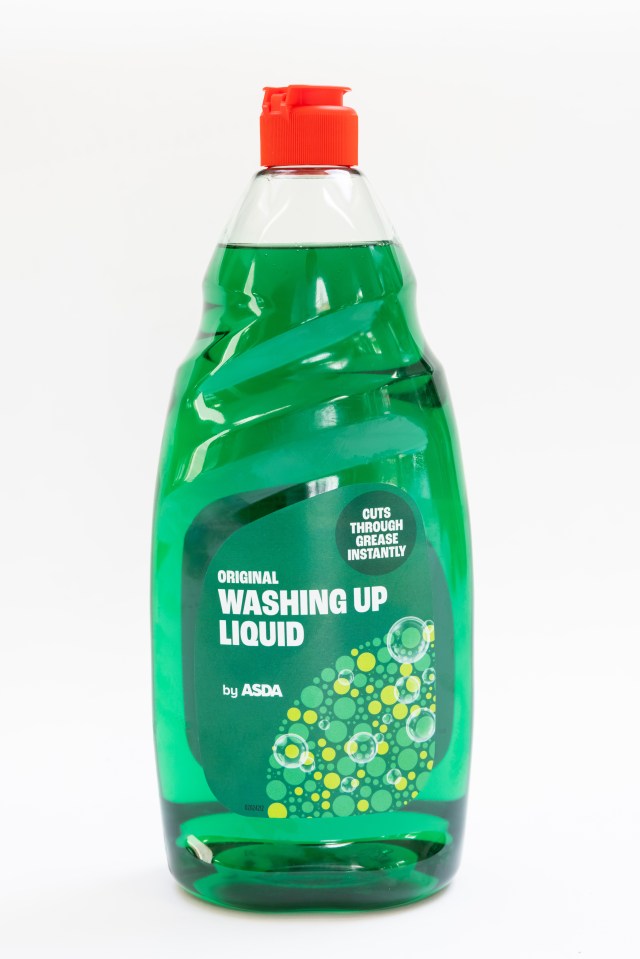KEEP your fake grass looking lush and green with this 5p hack – and find out why you should never hoover it.
The clever trick is simple, cheap, and keeps artificial lawns looking like new without hours of maintenance.
Experts warn that vacuuming fake grass can actually damage the fibres and make it look worn out, but with this easy 5p hack, you can refresh your lawn in minutes.
Fallen leaves, pet hair, spilled drinks, twigs, dust and dirt can all build up on your fake grass.
If left unchecked, this debris can damage the fibres and even encourage moss to grow.
While rainwater will wash away most surface grime, it’s a good idea to check your artificial grass weekly for loose dirt and debris.
A proper deep clean every four weeks will keep your lawn looking fresh, smelling great, and in top shape for years to come.
So, how can you clean the grass and get your lawn looking its best again?
Washing up liquid
Spills on artificial grass are inevitable – whether it’s coffee, wine, or even stray paint splatters from giving the fence a fresh coat.
The key is to tackle them straight away, before they harden and risk leaving a mark.
While artificial turf is tough and designed to resist stains, acting fast is the smartest way to keep it looking pristine.
Washing up liquid mixed with warm water is a quick and easy way to tackle everyday spills and mess.
Fill a bowl with lukewarm water and a dash of washing-up liquid, then work the suds into the fibres to lift the stain.
Soak the stain directly with a damp cloth or kitchen towel for liquid stains – but do not rub the grass.
Rinse thoroughly with a hose to wash away both the dirt and the solution.
Gardening tips and hacks

If the spill has dried on, gently loosen it with a toothbrush to avoid damaging the grass.
Washing-up liquid can cost as little as 5p per use, making it an extremely budget-friendly way to keep your fake lawn looking fresh.
But for stubborn stains or lingering smells, you’ll want to bring out a specialist artificial grass cleaner for a deeper refresh.
Why not hoover?
Don’t use your everyday vacuum cleaner on artificial grass, as it can damage the fibres and suck up the infill sand that keeps the turf in place.
Instead, opt for smooth, sweeping motions with a stiff brush or plastic broom for a safer, more effective clean.
If you prefer a powered option, choose a specialist garden vacuum designed specifically for artificial grass.
Standard hoovers aren’t built for damp surfaces, and exposure to condensation or rainfall could quickly ruin them.
Common mistakes
Never use sharp objects, as they can cut or tear the turf – tackle stuck or dried-on debris with a putty knife or another blunt tool instead.
Skip the heat after hosing down your lawn, as artificial grass will dry naturally.
Avoid harsh chemicals when removing sticky residue, as they can damage the plastic fibres – opt for a specialist synthetic grass cleaner.
Always clean gently without rubbing the grass too hard, as excessive force can cause unnecessary wear and damage.
A jet washer can clean artificial grass quickly – but it needs to be on a power setting that doesn’t damage the lawn.
So, test a small patch first, and keep the power nozzle at least a foot away from the artificial turf.
Gardening mistakes that could get you fined
Gardening experts over at Toolstation have revealed the garden laws you need to be aware of not breaking.
While some of these laws could land you with a fine of up to £20,000 in extreme cases, a friendly chat with your neighbours can usually resolve any issues.
Tree removal and pruning: If you have a tree in your garden you want to get rid of you better think twice and do your research.
The gardening experts reveal: “If one neighbour wishes to remove or heavily prune a tree that the other neighbour values, disputes can arise over the impact on the view, shade, or privacy. “
While it might cause a row, if it is in your property boundary it is ultimately your choice, unless it has a Tree Protection Order on it.
“But, some trees may be protected by a Tree Protection Order which makes it an offence to uproot, top or destroy them, the experts warn.
The maximum fine for breaking this law is £20,000, so make sure you double check if it does have a TPO.
You can find out by contacting your local council for a map that shows this information. Alternatively, you can ask to speak with your local tree officer.
Property boundaries and fences: One of the main causes of neighbours falling out is through arguing over property boundaries and fencing.
To avoid this situation, the gardening pros recommend checking the deeds of your property to determine the correct boundaries
“Most of the time, it’s easy to determine who owns the fence as the fence posts will usually be on the owners side,” they add.
“Additionally, the height of fences or hedges can cause disputes between neighbours if one party feels the height has exceeded the two metre guidance.
“Hedges and fences should be no more than two metres high, and you could be asked by the council to take them down if a neighbour complains about the height.
“Luckily, standard fence sizes are less than two metres tall so you shouldn’t have a problem.”
Garden structures and additions: A pergola is the perfect addition to a garden if you want somewhere to relax in the shade.
But if it obstructs your neighbour’s view or violates local building regulations it could cause a dispute, as can sheds and other garden structures.
“If you’re not sure, have a chat with your neighbours to let them know what you’re planning and, if there’s an issue, get in touch with your local council who can give you more guidance,” advise the gardening experts.
Overhanging branches and plants: “When branches, vines, or roots from one neighbour’s tree or plant extend into the neighbouring property, it can lead to disagreements over potential damage to structures, blocked views, or the burden of maintenance,” reveal the pros.
However, it’s important to note you can only trim overhanging branches up to the boundary of your property otherwise, it could be seen as trespassing.
You can climb into the tree to carry out the work if needed, but only on your property and make sure to stay on your side of the fence if you don’t have permission to enter your neighbours garden.














